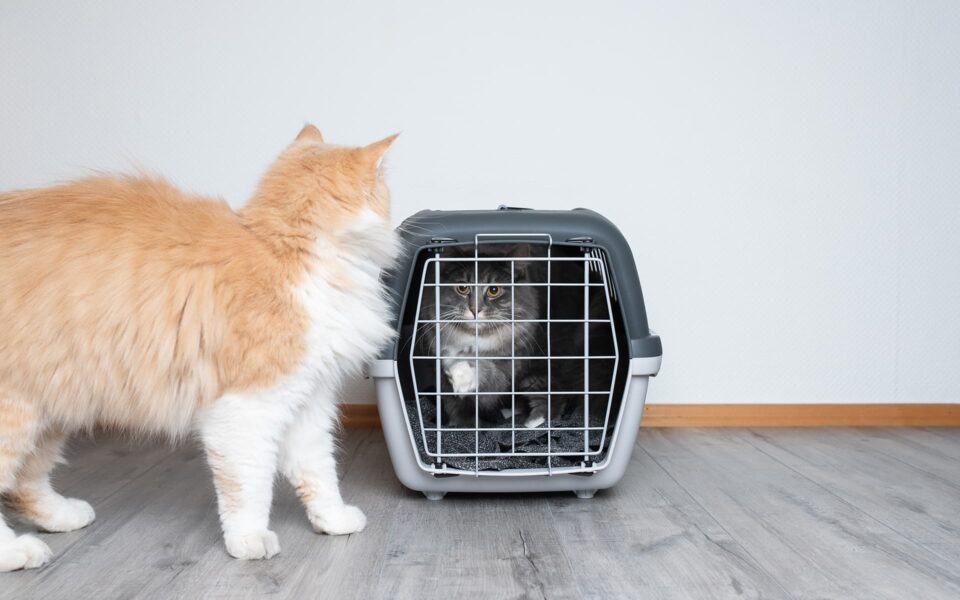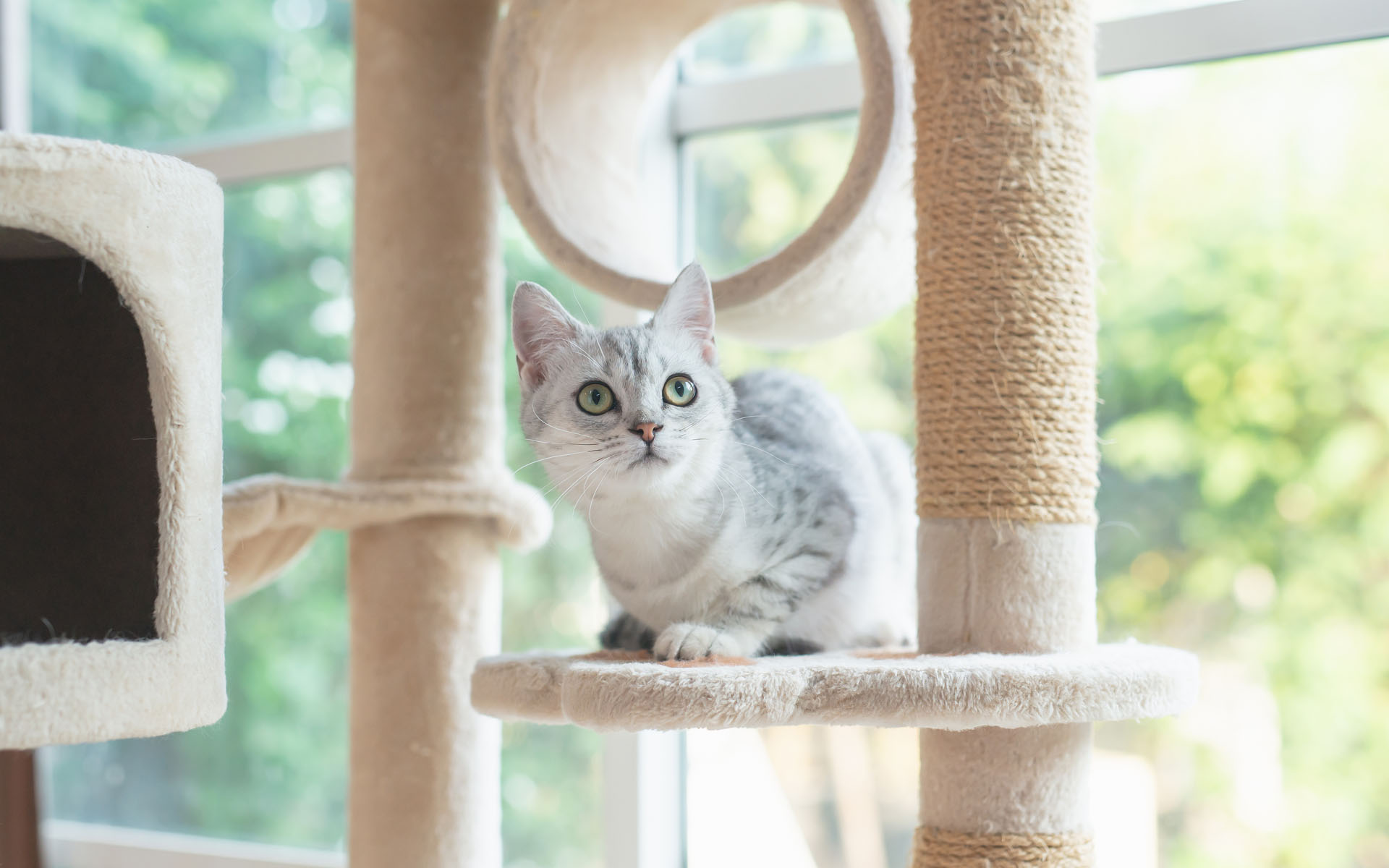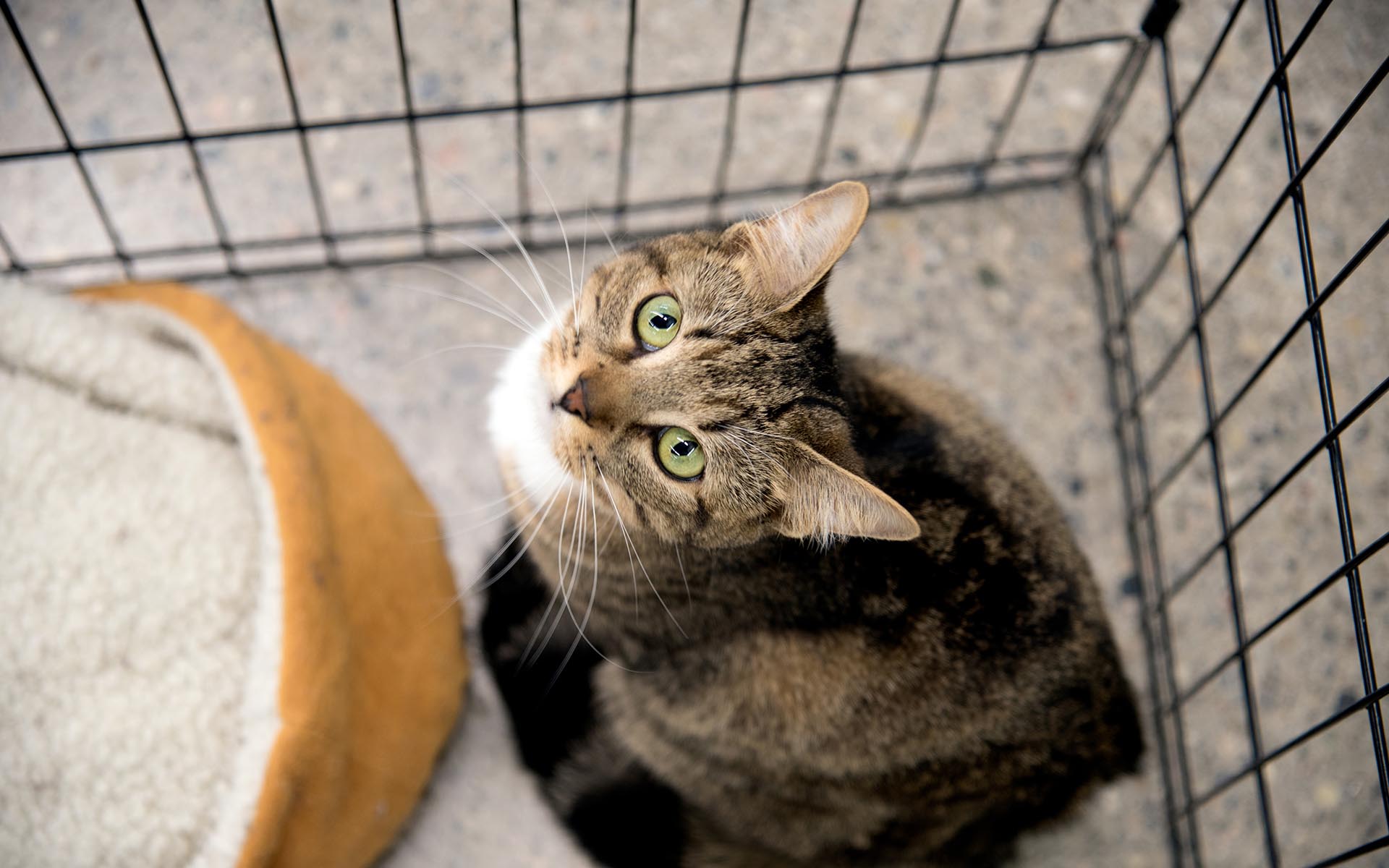You probably see your newly adopted kitten as an adorable, fuzzy bundle of cuteness. But if you already have a cat, they may see things differently. Welcoming a new pet can be a stressful experience for your resident cat. Here are some tips to make the introductions go more smoothly.
Before bringing in a new cat or kitten
Start by setting up a separate room for your new cat, making sure to include all the essentials: litter box, food and water bowls, toys and hiding places, like an empty cardboard box. Make this room off-limits to your resident cat.
Keep your new cat separated
To help your new cat feel more at ease during transport, place the towel or bedding they’ve been using to sleep inside their carrier box. The familiar scent will be comforting to them. When you arrive home, keep your resident cat in a closed room before bringing the newcomer in, avoiding any contact at this point. Head straight to your new cat’s dedicated room, open the carrier box and leave, closing the door behind you. Allow your new cat to explore their new surroundings at their own pace.
Getting cats used to each other’s scent
You can set the cats up for success during their first meeting by getting them acquainted with each other’s scent. Take your new cat’s bedding or towel and leave it near a favourite spot of your resident cat, tossing in a few treats. Do the same with your new cat, giving them the chance to approach a fabric toy or other belonging of your resident cat, and get rewarded in the process. The goal is to create a positive association between the other cat’s smell and treats.
Controlled conditions for a cat meeting
Once both cats seem comfortable around each other’s scent, you can initiate visual contact. Open the door to the new cat’s room very slightly: enough so both pets can see each other, but not enough to slip through. Reward them with treats or food. When both cats start sniffing each other, attempt to play through the door or otherwise seem happy, you can open the door wider and let them interact on their own. Don’t force them, allowing them to move away from each other if that’s what they prefer.
What if they hiss and swipe?
It’s possible that one cat (or both) will show signs of aggression, like hissing or attempting to swat their paw at the other. Simply close the door and repeat the process several times over the next few days. You can also move both cats’ food bowls closer to the door, so they’ll hear each other when feeding.
Be patient
While introductions involving kittens or very social cats can sometimes take place in a matter of hours, they may require several days or weeks for others. Be patient and put in the effort: it will all be worth it when both cats become best buddies for life in your home.









